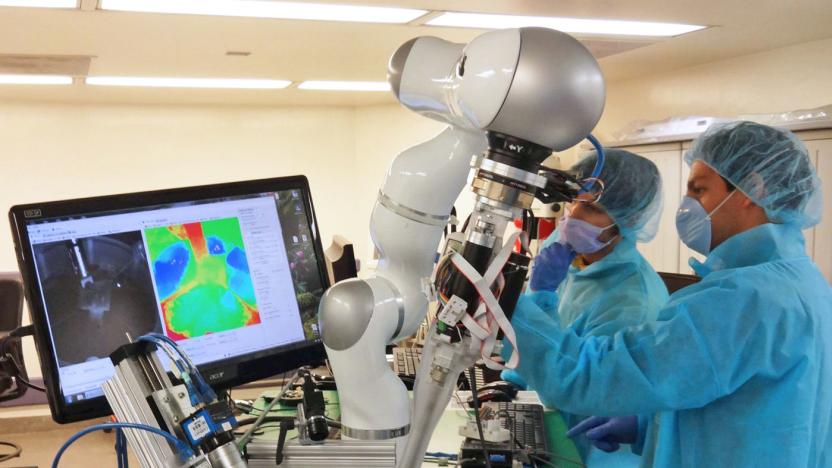timeline16robojob
Latest

Foxconn replaces 60,000 human workers with robots
According to reports, the world's largest electronics manufacturer Foxconn has replaced around 60,000 human factory workers with machines. Or, as a government publicist for the city of Kunshan told the South China Morning Post, the factory "reduced employee strength from 110,000 to 50,000 thanks to the introduction of robots. It has tasted success in reduction of labour costs."

Pepper the robot gets a job at Pizza Hut
SoftBank's Pepper robot has been gainfully employed in the past, but it's apparently ready for a new career in the food industry. Pizza Hut Asia is partnering with MasterCard on a trial that will use Pepper for orders and information in restaurants by the end of 2016. Once you pair your MasterPass account, you can do everything from paying for your meal to asking about the calorie count. It's not necessarily as quick as ordering directly from your phone, but a demo (below) suggests that it's fairly painless -- it's easy to see the humanoid helper taking some of the load off of Pizza Hut's staff. Let's just hope that it fares well in less-than-ideal conditions.

Surgical robot could sew you up better than a doctor
Surgical teams aren't fond of robots that could replace them (just ask Johnson & Johnson), but that doesn't mean they're completely against mechanical helpers. Children's National Medical Center and Johns Hopkins University recently tested a Smart Tissue Autonomous Robot (STAR) arm during experimental bowel surgery on anesthetized pigs. The machine only handled suturing by itself, but excelled at that job -- it sewed more consistently than veteran doctors and even other robotic assistants. Its edge comes from using a depth-savvy light field camera to find fluorescent markers placed inside the tissue, helping it spot folds that would normally stay hidden.

Stanford's humanoid robot diver explores its first shipwreck
A group of underwater archaeologists exploring the sunken remains of King Louis XIV's flagship La Lune added a very special member to their dive team recently. OceanOne, a Stanford-developed humanoid diving robot with "human vision, haptic force feedback and an artificial brain," made its maiden voyage alongside human divers to recover 17th-century treasures from bottom of the Mediterranean.

AI-written novel passes first round of a literary competition
Researchers from the Future University in Hakodate have announced that a short-form novel co-written by an artificial intelligence also developed by the team was accepted by a Japanese story competition, the Hoshi Shinichi Literary Award. Though the story didn't eventually win the competition, its acceptance does suggest that AI systems are quickly becoming capable of emulating human-like creativity.

